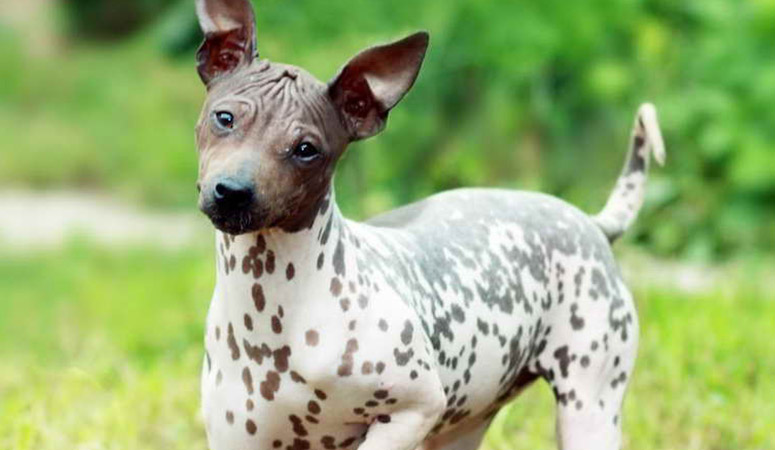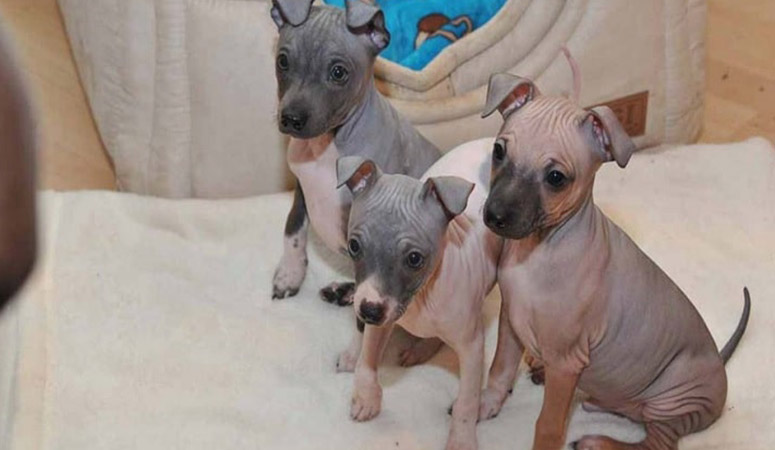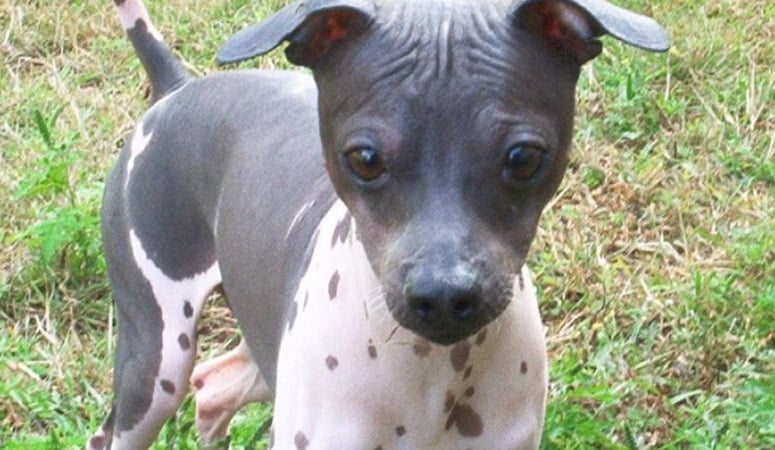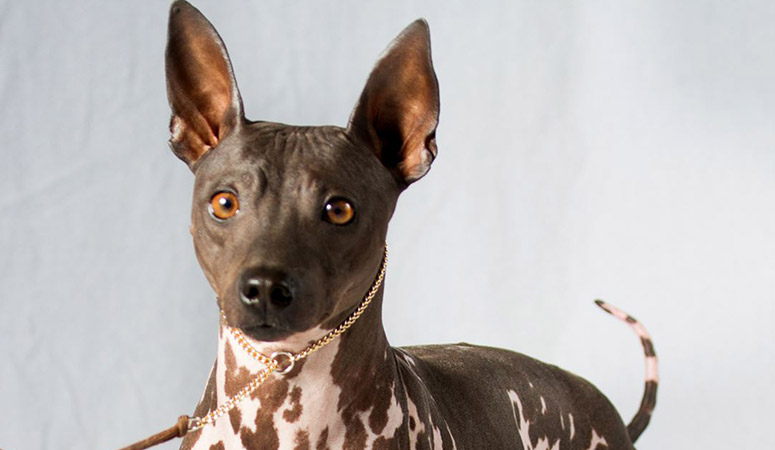American Hairless Terrier
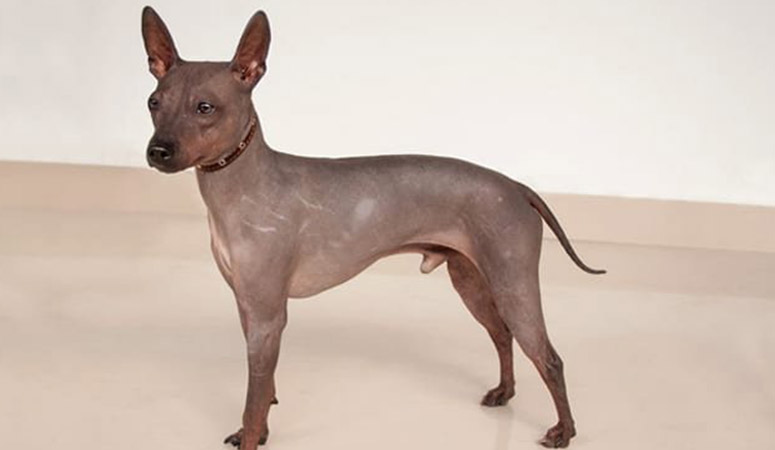
The American Hairless Terrier a small, well-muscled, and active terrier that can either be of the hairless or coated variety, and they are the only hairless dog breed indigenous to the United States. Nowadays, they are known as active companion dogs and especially good choices for allergy sufferers.
| Other Names | Rat Terrier – Hairless Variety |
| Color | variety of colors and patterns with white |
| Height | Males: 10-18 inches. Females: 10-18 inches. |
| Weight | Males: 5-16 pounds. Females: 5-16 pounds. |
| Life Span | 14-16 years |
| Personality | Energetic, Alert, Curious |
| Exercise | Calm |
| Origin |
| Popularity | #124 |
| Groom Needs | Ocassionally |
| Kids Friendly | Yes |
| Dog Friendly | Yes with supervision |
| Watch Dog | |
| Family Dog | |
| Litter Size | 3-5 |
American Hairless Terrier Pictures
American Hairless Terrier Video
Introduction
The athletic and inquisitive American Hairless Terrier is a true member of the Terrier Group, unique for its hairless coat and matchless courage, though recent evidence shows that this dog breed still has a coated variety. American Hairless Terriers are born with hair, but begin to lose them with age due to genetic factors. Care should be taken to protect them from sunburns and extreme weather conditions like the cold. They come in different color varieties, including white.
The standard size of this breed stands 12-17 inches at the shoulder, though females run quite smaller than the males. The same dog is likely to tip the weighing scales towards 16 pounds, if fully grown. American Hairless Terriers have a broad head, notable for being wedge-shaped. They make good watchdogs and amiable companions. Their lifespan is 13-16 years.
Living with American Hairless Terrier
The American Hairless Terrier actually comes in two varieties: coated and hairless. For either type, grooming needs are minimal. For the hairless dogs, brushing isn’t necessary, but their skin is prone to sunburn, and it is suggested to use and application of veterinarian-recommended sunscreen before going outside. They need sun protection even in the colder months. And if you live in a cold area, you need to get your dog a coat, booties, or a hat in the winter days.
And the variety with a short, shiny coat is almost as carefree. They hardly shed, a quick session with a soft bristle brush on a weekly basis is recommended for the dog, and an occasional bath as needed. Besides, trimming nails regularly is helpful to prevent painful splitting, cracking, or breaking a nail.
The American Hairless Terrier has only moderate exercise needs. Daily exercise about 30 minutes is necessary, but they are happiest and better behaved with 45 minutes or more each day, and brief daily sessions in a securely, fenced yard or regular walks are great exercise options.
It is needed to mention that American Hairless Terriers are prone to weight gain, and they have high energy levels. They may become destructive, bark excessively, or become hyperactive without enough exercise. And their high trainability helps them excel in a wild range of canine activities, such as obedience, rally, and agility competitions.
Generally, it is recommended to feed the American Hairless Terrier with a half to one cup of high-quality dry dog food every day, divided into two meals. And there should be clean and fresh water at all times. More importantly, the food amount should depend on the dog’s weight, size, age, and activity level.
Some dogs are easy to get overweight, so you need to watch their calorie consumption and weight level all the time. Treats may be an important aid in training, but excessive intake can lead to obesity. Also, owners need to distinguish which human food is safe for dogs and which are not. If you have any problems with your dog’s weight or diet, just consult from your veterinarian.
American Hairless Terriers are prone to the following health conditions: hip dysplasia, epilepsy, dental concerns, deafness, liver shunt, patellar luxation, cardiac conditions, allergies and skin conditions, Cushing’s disease, etc.
Major Concerns: cardiac conditions, hip displaysia, luxating patella and Legg-Calve-Perthes disease (hip joint disease)
Occasionally Seen: skin conditions, though quite rare
Suggested tests:
Cardiac Exam
Hip Evaluation
Patella Evaluation
Total Annual Cost: $2674
Cost is estimated for the first year and may vary depending on many factors, such as dog food, health care, leash, collar, licensing, possible fencing, crates, training and obedience classes, dog-walking, grooming, treats, toys, flea, tick, and heart-worm meds, microchips, etc.
Intelligent and eager to please, training for the American Hairless Terriers is usually an enjoyable and easy activity. They can learn basic obedience with ease, but sometimes their stubborn nature makes them not always act like they know the rules, so positive reinforcement is helpful for this eager breed.
It is recommended to start early socialization and puppy training classes like other dog breeds. Gently exposing the puppy to a wide variety of people, places, will help the dog develop into a well-mannered and adjusted adult. Besides, American Hairless Terriers are great candidates for agility and advanced tricks or obedience training.
History
The American Hairless Terrier developed as a variant of the Rat Terrier. Rat Terriers originated in England, but the American Hairless Terrier has American roots. In the 1800s, ratting was popular in England as there was rampant dissemination of vermin in homes, farms and workplaces alike. A ratting breed, popular at the time as Feists, which descended from a cross between Smooth Fox Terriers and Manchester Terriers was a common ratter of the 19th century.
These resilient little ratters were recognized as Feists until they arrived in the United States. It was said that British miners who sought to make a living across the Atlantic came into America along with dogs believed to be Feists in the 1890s. It was during this period that the Feists were further crossed repeatedly with the Smooth Fox Terrier, and even though these crosses didn’t seem to add significantly to the gene pool and the features of the breed, they served to strengthen and consolidate the existing features of the breed.
President Theodore Roosevelt was popular with Feists (he had about three of them and the most famous one was called Skip). He named his Feist dogs “Rat Terriers” and the name stuck to date. In 1972, however, something noteworthy happened which resulted in the American Hairless Terrier. A hairless puppy was sired by a Rat Terrier belonging to Edwin and Willie Scott of Louisiana. This hairless dog, named Jemimah, formed the foundation stock of the American Hairless Terrier.
The American Hairless Terrier was still recognized as the hairless variety of the Rat Terrier before 2004 when it gained recognition from the United Kennel Club. It wasn’t until 2009 that an American breed club was established for the breed. The American Hairless Terrier was officially recognized by the American Kennel Club in 2016.
Helpful Information
Breed Club: AMERICAN HAIRLESS TERRIER CLUB OF AMERICA
Breed Club Link: http://www.ahtca.info/
Breed Club Rescue:
Breed Club Rescue Link: http://www.ahtca.info/akc-sportsmanship-code–board–rescue–committees.html

